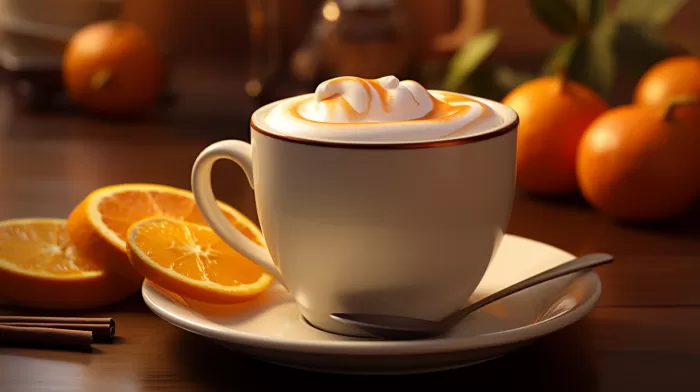Imagine you’re sitting down to enjoy a warm cup of hot chocolate on a cold day. Wouldn’t it be great if there were a simple way to make that already delicious beverage even better? As it turns out, there may be. According to a study published in the Journal of Sensory Studies, the color of the cup you use can significantly affect the taste of your hot chocolate. Let’s break this down, and explore exactly how and why this could be.
Color Theory
Although it may seem strange, research has shown that our experience of taste can be influenced by various factors, including the color of our surroundings and the serving dish. In the case of hot chocolate, the study found that the beverage tasted best when served in orange or cream-colored cups. This is likely because our brains associate certain colors with specific tastes, temperatures, and textures. For example, the colors orange and cream can trigger associations with warmth, richness, and sweetness, all of which are attributes we might associate with a delicious cup of hot chocolate.
In contrast, the same hot chocolate served in a white or red cup was not rated as highly by the study’s participants. This suggests that not all colors are created equal when it comes to influencing our perception of taste. While certain colors may enhance the overall experience of consuming a food or beverage, others might detract from it.
The Science Behind Cup Color
To understand why the color of the cup might alter the taste of our hot chocolate, it’s important to recognize that our brains are constantly receiving and processing information from our senses. Sight, smell, touch, taste, and sound are all taken into account when we form an overall impression of a food or beverage.
In the case of the hot chocolate study, 57 volunteers were asked to rate the taste of hot chocolate served in cups of different colors. While the participants did not note any significant differences in the sweetness or aroma of the beverage based on the cup color, they did find that the hot chocolate tasted best when served in orange or cream-colored cups.
This suggests that the color of the container plays a role in influencing our perception of taste, even if the actual ingredients and quality of the food or beverage remain the same. By subconsciously altering our expectations and associations with a food or beverage’s flavor, the color of the container can ultimately shape our experience of consumption.
Beyond Hot Chocolate
Now, this phenomenon isn’t just limited to hot chocolate. Cup color has been shown to impact the taste of other beverages as well. For instance, one study found that participants rated the taste of a cold beverage higher when served in a blue or green glass, as opposed to a yellow or pink one. This may be because cooler colors like blue and green are associated with freshness and coolness, making them more appealing choices for a cold drink.
In addition, the appearance of food is also known to influence our perception of taste. Research has shown that when food is presented attractively, we are more likely to enjoy it and ultimately find it more delicious. This is why chefs and food stylists put so much effort into creating visually appealing presentations for their dishes.
Applying the Findings
Understanding the connection between color and taste can provide valuable insights for those in the food and beverage industry, as well as anyone looking to enhance their own culinary experiences. Simply changing the color of a cup, plate, or even the surrounding environment can have a significant impact on our perception of the food or drink we consume.
For example, if you’re hosting a dinner party, consider adjusting the color scheme of your table settings and decorations to complement the flavors and textures of the dishes you’re serving. By carefully selecting the right colors, you may be able to create a more enjoyable dining experience for your guests.
Similarly, if you’re a business owner in the food and beverage sector, you might want to pay closer attention to the colors you use in your branding, packaging, and even the design of your physical locations. By strategically choosing colors that enhance the taste of your products, you could potentially boost customer satisfaction and increase sales.
The Bottom Line
The psychology of color is a fascinating and complex subject, and our understanding of it is still growing. What is clear, however, is that color can and does play a role in shaping our experiences of taste. So the next time you reach for a cup to enjoy a hot chocolate, consider choosing an orange or cream-colored one, and see for yourself if it enhances the taste of your favorite cozy beverage.



